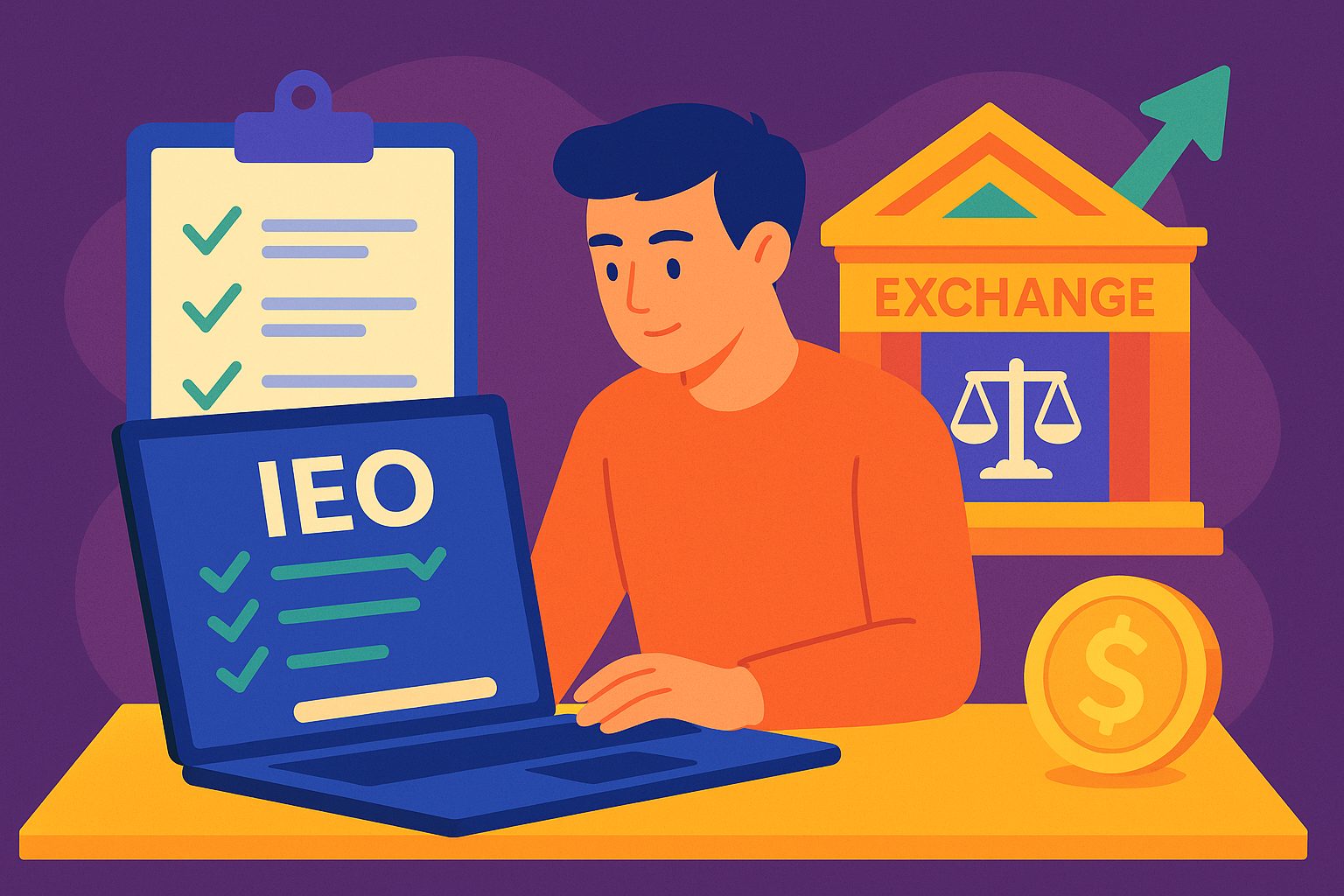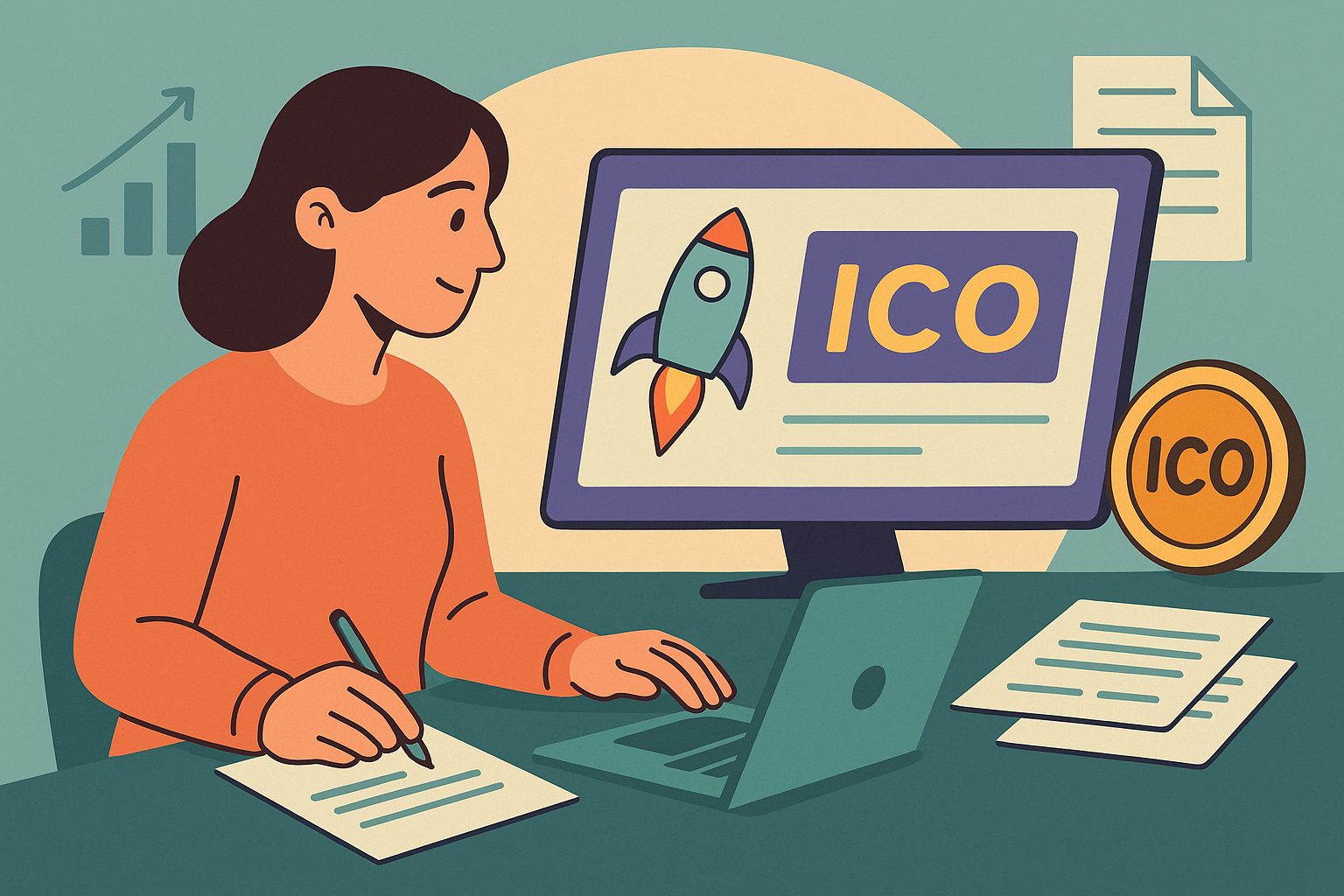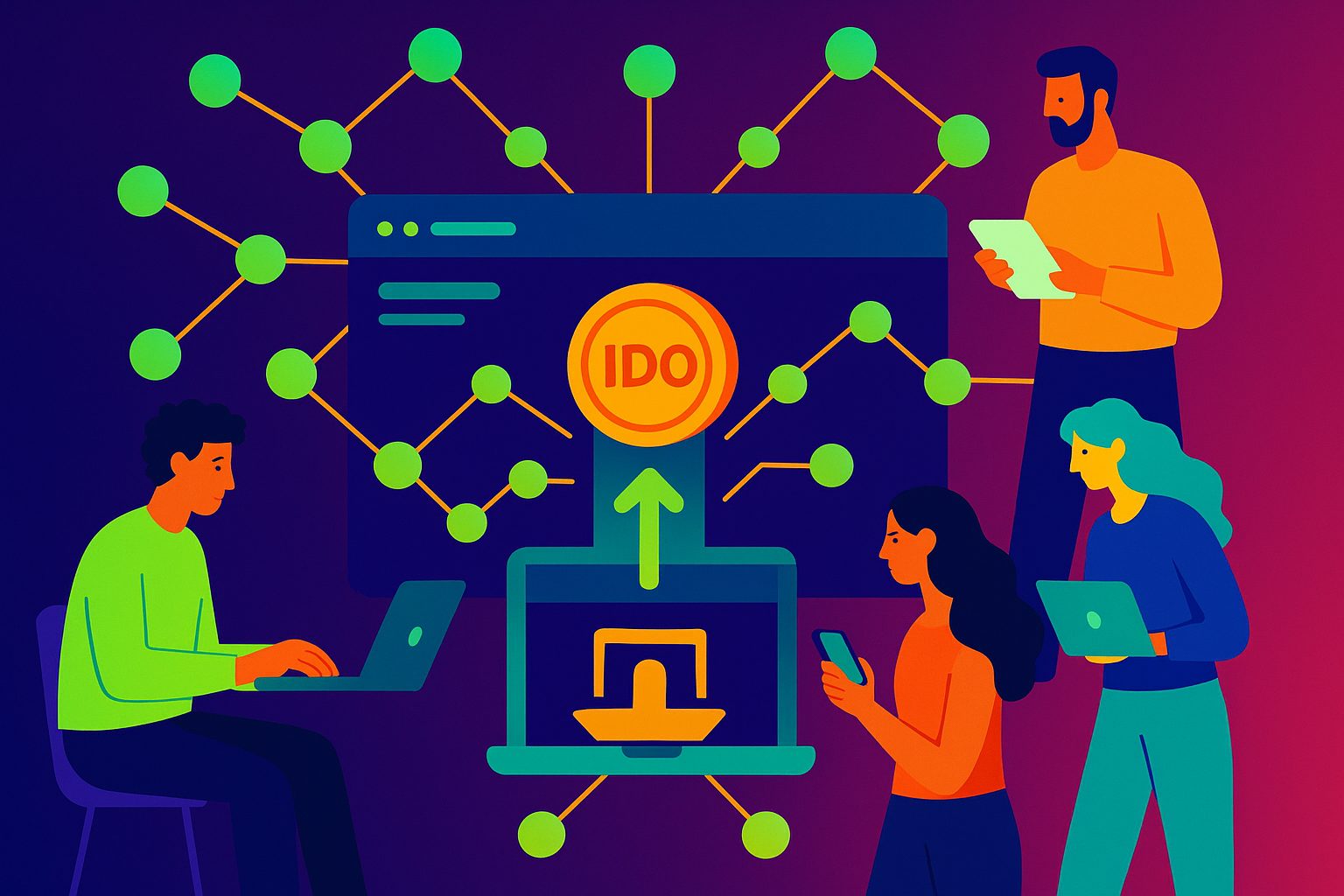Understanding the Appeal of IEOs
In an ever-expanding universe of blockchain fundraising, Initial Exchange Offerings (IEOs) have emerged as a compelling alternative to traditional Initial Coin Offerings. By leveraging the credibility and user base of established cryptocurrency exchanges, projects can tap into instant liquidity, streamlined Know-Your-Customer (KYC) processes, and enhanced investor trust. Exchanges vet participating projects, conduct due diligence, and handle token custody, alleviating many of the technical and regulatory burdens that can thwart an ICO. For founders, this translates into a more focused push on product development and community engagement rather than wrestling with the intricacies of self-hosted token sales. From a marketing standpoint, an IEO also confers a built-in promotional platform: featured exchange listings, email blasts, and prominent placement on exchange dashboards amplify project visibility. As a fundraising model, IEOs strike a balance between the autonomy of token launches and the structured support of centralized partners, making them an attractive choice for teams seeking both reach and reliability.
Selecting the Ideal Exchange Partner
Choosing the right exchange is the cornerstone of any successful IEO. Beyond mere market capitalization or daily trading volume, projects should assess an exchange’s reputation for security, track record of successful token launches, and alignment with their target audience. Some exchanges specialize in DeFi tokens, attracting a community of sophisticated traders and developers, while others cater to mainstream investors with simplified interfaces. Founders must also consider geographic reach—does the exchange serve the jurisdictions where their core supporters reside? Equally important is the exchange’s technical capability to support smart contract standards, vesting schedules, and token economics. Negotiations around listing fees, revenue splits, and marketing commitments often hinge on projected fundraising volume and long-term trading activity. Ultimately, a strong exchange partnership encompasses more than a sale date; it involves joint go-to-market planning, post-listing support, and ongoing collaboration to ensure sustained liquidity and community growth.
Navigating Due Diligence: Exchange Vetting Criteria
Exchanges safeguard their brand—and users—by subjecting listing candidates to rigorous due diligence. Expect to furnish comprehensive documentation covering team biographies, company incorporation records, whitepaper drafts, and detailed tokenomics models. Exchange compliance teams will scrutinize code repositories for smart contract vulnerabilities, often requiring third-party audit reports from reputable firms. Legal teams evaluate regulatory risks by assessing token classification, fundraising jurisdictions, and KYC/AML frameworks. Financial projections, vesting schedules, and lock-up arrangements also factor into the review, as exchanges aim to prevent market manipulation and sudden sell-offs. Some platforms supplement manual reviews with automated risk scoring systems, analyzing on-chain activity and developer histories. To streamline the process, projects should prepare a dedicated due diligence dossier well in advance, anticipating follow-up questions and promptly updating documents as the review progresses. Transparency and responsiveness at this stage signal professionalism, accelerating approval timelines and cementing the exchange’s confidence in the project’s readiness.
Crafting Your Legal Framework and Compliance Dossier
Underlying every IEO is a robust legal foundation that reconciles token economics with evolving securities regulations. Projects must decide whether to limit participation to accredited investors or open sales to the general public, taking into account regional restrictions and investor accreditation requirements. Collaborating with specialized blockchain attorneys ensures accurate classification of tokens—whether as utility tokens, security tokens, or hybrid instruments—and the drafting of clear terms of sale. Practical measures include implementing KYC and AML procedures through trusted service providers, maintaining data security protocols, and establishing transparent refund policies. Exchange partners typically require a legal opinion letter confirming compliance measures and identifying any outstanding regulatory uncertainties. In jurisdictions with stringent securities laws, obtaining pre-approval or no-action letters from financial authorities can further bolster credibility. By codifying legal and compliance frameworks early, teams avoid costly last-minute pivots and reinforce investor confidence throughout the IEO process.
Building the Technical Infrastructure for Seamless Integration
A seamless technical integration between your project and the exchange is vital to avoid hiccups during the token sale. This involves deploying smart contracts that adhere to the exchange’s technical specifications—standard interfaces for token minting, vesting, and transfer restrictions. Projects should develop modular, upgradeable contracts to accommodate future governance features or emergency stop mechanisms. In parallel, back-end engineers collaborate with exchange API teams to configure purchase endpoints, payment flows, and participant tracking systems. Rigorous testing in sandbox environments helps uncover compatibility issues, transaction bottlenecks, or gas inefficiencies. Comprehensive test suites, continuous integration pipelines, and staging deployments simulate high-traffic scenarios, ensuring the system can handle peak subscription volumes without latency or failure. Documenting technical workflows, from API authentication to wallet address reconciliation, reduces ambiguity and aligns cross-team responsibilities. When launch day arrives, a bulletproof technical stack instills confidence in both the exchange and participants, minimizing the risk of costly errors.
Aligning Marketing and Community Engagement Strategies
An IEO’s success hinges as much on marketing orchestration as on technical prowess. Joint go-to-market planning with the exchange amplifies reach: co-branded webinars, AMA sessions on exchange forums, and targeted email campaigns introduce your project to established trading communities. Founders should maintain a cadence of educational content—blog posts, explainer videos, and expert interviews—that demystify project features and underscore use cases. Social media channels and community platforms like Telegram and Discord become hubs for real-time updates, troubleshooting, and feedback gathering. Incentivized bounty programs, referral bonuses, or staking rewards can deepen engagement, but must be carefully structured to comply with exchange policies and regional regulations. Coordinated announcements—teasing key milestones, token unlock dates, and listing schedules—generate sustained buzz leading up to the IEO. By weaving marketing efforts with the exchange’s promotional machinery, projects ignite enthusiasm, drive subscriptions, and cultivate long-term community loyalty.
Submitting Your IEO Listing Application
With groundwork laid, projects formally submit their listing applications through the exchange’s platform. Applications typically include a completed questionnaire detailing project objectives, token metrics, and technical deployment plans, accompanied by all due diligence and legal documents. Some exchanges require initial deposits or non-refundable application fees to initiate the review. It’s crucial to designate a single point of contact—often a project manager or operations lead—who can coordinate responses to the exchange’s queries, schedule follow-up calls, and track approval milestones. Maintaining an internal status dashboard ensures all stakeholders—developers, legal advisors, and marketing teams—are aligned on pending tasks and deadlines. Promptly addressing any information requests or clarifications demonstrates agility and professionalism, preventing application stagnation. Once submitted, projects enter an active review phase, where transparent communication and readiness to adapt to exchange feedback expedite the path to approval.
Undergoing the Review: Timelines and Expectations
Review timelines vary across exchanges, ranging from a few weeks for smaller platforms to several months for top-tier venues. During this period, compliance teams may request deep dives into smart contract code, additional audit certifications, or clarifications on fund allocation. Technical teams work in parallel to refine API integrations and staging deployments based on testing feedback. Marketing calendars may shift in response to approval dates, requiring agile readjustment of campaign timelines. Exchanges often provide estimated decision dates but reserve the right to extend reviews for high-risk or complex tokens. Projects should plan for contingencies—back-up launch dates, alternative fundraising channels, or scaled-down initial offerings—to accommodate potential delays. Regular check-ins with exchange liaisons keep teams apprised of progress and emerging requirements, ensuring that no critical detail falls through the cracks as the listing approval draws nearer.
Finalizing Agreements and Lock-Up Terms
Upon successful review, projects and exchanges negotiate final listing agreements. Key elements include token listing dates, lock-up periods for team and private-sale allocations, revenue-sharing structures, and joint marketing commitments. Lock-up schedules align with exchange policies to prevent immediate sell-pressure, typically spanning three to twelve months for founder and advisor tokens. Agreements also stipulate token unlock notifications, vesting cliff details, and emergency withdrawal protocols. It’s essential to review all contractual language with legal counsel, ensuring compliance with regional laws and protecting against unforeseen liabilities. Once both parties sign off, project teams receive technical credentials for API access, token vault addresses, and staging environment sign-offs. Clear documentation of these finalized terms provides a roadmap for launch day coordination and subsequent post-IEO operations.
Integration and Technical Listing Steps
With agreements in place, attention turns to final technical preparations. Engineering teams deploy the audited smart contracts to the mainnet, verifying token minting, allocation, and vesting behaviors with on-chain transactions. Exchanges provision token custodial wallets, configure trading pairs, and set initial price parameters based on agreed valuation. API endpoints are tested for buy-order execution, participant whitelisting, and transaction reporting, ensuring a frictionless purchase experience. In tandem, back-office systems reconcile subscription data, wallet address mappings, and fund disbursement schedules. End-to-end dry runs simulate user journeys from exchange wallet authorization to token reception, surfacing any user-experience issues before the public sale. By treating integration as a multi-phased checklist rather than a final sprint, teams mitigate last-minute surprises and uphold the rigorous standards expected by both exchanges and investors.
Launch Day Coordination and Post-Sale Support
When the IEO goes live, seamless coordination across operations, engineering, and community teams is paramount. Real-time monitoring dashboards track subscription volumes, gas usage, and transaction success rates, alerting teams to any anomalies. Community managers field queries on social channels, clarifying purchase steps and guiding unfamiliar participants through wallet setups. Meanwhile, technical responders stand by to address API timeouts or wallet-sync issues, escalating critical incidents to exchange support channels. As the sale concludes, fund distribution scripts allocate proceeds to designated treasury wallets, triggering vesting contracts for locked tokens. Exchange teams activate trading markets, update order books, and communicate listing confirmations via email blasts and platform notifications. Comprehensive post-IEO reports—detailing participation metrics, fundraising totals, and technical performance—provide valuable insights for stakeholders and set the stage for subsequent fundraising rounds or product launches.
Sustaining Momentum: Beyond the IEO
An IEO represents a major milestone, but it is by no means the culmination of your project’s journey. Post-listing, maintaining liquidity is essential; projects can seed additional liquidity pools or incentivize market-making partnerships to stabilize token prices. Community governance forums should open for token-holder voting on protocol upgrades, grant distributions, and strategic pivots. Marketing efforts shift toward product demonstrations, technical deep dives, and strategic partnerships that showcase real-world use cases. Regular progress updates—via blog posts, webinars, and video demos—reinforce transparency and keep stakeholders engaged. In parallel, development teams execute roadmap milestones, integrating feedback from early adopters and iterating on core features. By sustaining a culture of continuous delivery and community inclusion, projects transform the momentum of their IEO into enduring ecosystem growth and on-chain utility.
Charting the Future: Lessons for Your Next Offering
Preparing for an IEO demands meticulous planning, cross-functional collaboration, and unwavering attention to detail. From selecting the right exchange partner and navigating rigorous due diligence to orchestrating launch-day operations and driving post-sale adoption, each step shapes investor perception and long-term viability. As the blockchain fundraising landscape evolves—with hybrid models, decentralized launchpads, and regulatory frameworks on the horizon—projects that internalize these lessons will stand apart. Embrace transparent communication, invest in secure technical infrastructure, and cultivate genuine community engagement to maximize the impact of your next IEO. With a robust playbook in hand, you’re well-positioned to navigate the complexities of exchange requirements and listing steps, propelling your project toward sustainable success in the dynamic world of crypto offerings.




